Maximize Pool Use Year-Round with Solar Heating Solutions
June 15th, 2024
June 15th, 2024
Beneath the bright canvas of a summer sky, the idea of a swim in a sun-warmed pool is irresistibly appealing. Yet, as seasons shift and cooler breezes begin to bite, the joy of a warm swim becomes elusive. This is where solar pool heaters step in as an eco-friendly solution to extend swimming pleasure. Harnessing the power of the sun, these systems not only cut down on energy costs but also offer a sustainable way to maintain the perfect pool temperature.
Several years ago, while wandering through a solar energy expo, I stumbled upon a display of solar pool heaters. Initially skeptical, my curiosity soon transformed into fascination as I learned about the technology's efficiency and environmental benefits. Solar collectors, heat exchangers, and control systems work harmoniously to soak up and transfer the sun’s warmth, turning a chilly pool into a welcoming oasis.
Choosing the right solar pool heater, however, is akin to selecting the perfect pair of sunglasses—not just any model will do. Factors such as pool size, climate, and budget play crucial roles in determining the optimal system. Moreover, with a plethora of options available, from glazed panels to unglazed collectors, the decision requires careful consideration. Understanding these elements not only ensures a wise investment but also promises many delightful swims, even when the sun is less generous.
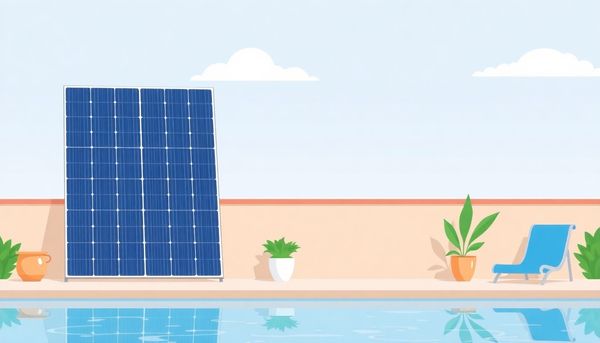
Solar energy isn’t just for the tech-savvy folks in Silicon Valley or wealthy homeowners with sprawling mansions. It’s a resource available to anyone whose backyard catches a few rays of sunshine. With a solar pool heater, you could be making the most of this natural bounty, transforming it into cost-effective warmth for your swimming oasis.
Think back to those chilly mornings when you hesitated to dip a toe in the pool. It doesn’t have to be that way. Even if you’re in a region where the mercury tends to dip, solar technology can extend your swimming season. The beauty of solar pool heaters lies in their simplicity and durability. They harness the abundant energy of the sun, circulating your pool water through solar collectors to gradually and efficiently raise the temperature.
Of course, harnessing solar power requires some planning. You’ll need to assess how much sunlight your yard receives and whether your roof or backyard has enough space for the solar collectors. If you live in a sun-drenched locale like Arizona or Florida, you’re in the perfect spot. But even in less sunny areas, a well-designed system can work wonders.
Consulting with a local solar expert can be invaluable. They’ll help evaluate your site’s solar potential, ensuring that every dollar spent translates into notable savings and a toasty pool. Embrace the solar revolution; your pool and wallet will thank you.
Harnessing the sun's energy to keep your pool warm feels like a science fiction fantasy, but it’s a science fact. To get the most out of your solar pool heater, your installation must be as efficient as possible. My friend Jack, a fellow pool enthusiast, once shared his surprise at how a few adjustments drastically improved his heater's performance. Following his lead, I discovered that optimizing solar heating efficiency involves more than just selecting the right model.
Begin by ensuring your solar collectors have optimal sun exposure. Position them to face true south if you're in the northern hemisphere, or true north for southern hemisphere residents. This alignment maximizes sun absorption throughout the day. A slight tilt adjustment can also enhance efficiency—aim for an angle equal to your geographic latitude for year-round use. If Jack's story taught me anything, it’s that even minor misalignments can cost you precious degrees in water temperature.
Additionally, consider the size of your solar collectors relative to your pool's surface area. Employ the "Three Quarters Rule" for seasonal pools or go full coverage if your pool remains open year-round. This rule of thumb ensures you’re harnessing enough solar power for your specific needs. Don't forget about the pump; a more powerful one might be necessary if your collectors are a distance from the pool.
Investing time in understanding your site’s unique solar resource can pay dividends in both comfort and cost savings. By following these steps, you’re not just warming your pool—you're swimming with the sun by your side.
Finding the perfect spot for your solar pool heater isn't just about securing a sunny locale; it’s akin to orchestrating a delicate dance between nature and technology. When I helped my friend install her solar pool system, we spent a weekend scouting her backyard for prime real estate. It wasn’t as simple as plopping the panels anywhere sunbeams danced; we had to consider the angle of the roof, the sway of the nearby oak tree, and even the mischievous shadow cast by her neighbor’s oversized satellite dish.
Orientation and tilt are your guiding stars. Aligning your collectors towards the true south, with a tilt that matches your latitude, will maximize solar absorption. There’s flexibility here; a few degrees east or west won’t ruin the party, especially if your locale is bathed in sunlight. However, if your backyard shares more in common with Seattle’s drizzle than Arizona’s blaze, consider supplementary heating options to sustain pool warmth.
Space, too, is a critical player. If your yard is a cozy enclave, think vertical—rooftop installations conserve precious ground area. This was our choice, and while hauling panels up a ladder was a workout, it freed up lawn space for barbecues. A stronger pump might be needed if the distance from the collector to the pool increases, so don’t skip out on planning.
Remember, optimizing placement isn’t merely about catching rays; it’s about crafting a setup that harmonizes with your environment and lifestyle. With thoughtful positioning, your solar pool heater will not only heat your pool efficiently but also blend seamlessly into your home’s ecosystem.
When contemplating a solar pool heater, calculating cost-effectiveness can feel like deciphering a secret code. Yet, it’s simpler and more rewarding than it seems. Consider a friend who recently swapped her traditional heater for a solar model and couldn’t stop raving about the savings. To emulate her success, a few key calculations are essential.
Begin with your pool’s size. Determine the surface area, as this directly impacts the number of solar collectors you’ll need. For instance, if your pool spans 400 square feet and you live in a sunny locale, you may require collectors covering about 75% of that area. In cooler regions, aim for full coverage to maximize efficiency.
Next, examine the thermal performance ratings of potential systems. These ratings, often in BTUs per square foot per day, tell you how well a system converts sunlight into heat. A higher rating means more efficient energy use and fewer panels necessary, translating to cost savings in the long run.
Finally, calculate the cost per unit of energy produced. By dividing the system's total cost by its daily energy output, you’ll understand the value in BTU/day per dollar spent. This figure allows you to compare options and decide which offers the best return on investment, balancing upfront costs with long-term efficiency and savings.
In essence, the right solar pool heater will turn your pool into a sun-kissed haven while keeping your wallet happy. With these calculations, you’ll soak in both warmth and fiscal prudence, making every swim a testament to smart investing.
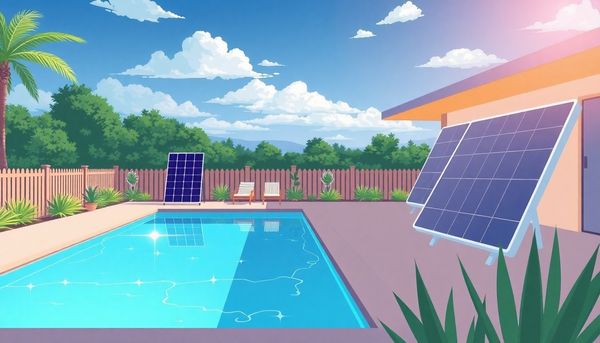
Harnessing the sun's power to keep your pool warm is a brilliant strategy, but doing it efficiently requires more than just laying out some panels. Living in Phoenix, I've learned a few tricks to get the most out of a solar pool heater. Every sunny day is an opportunity, but maximizing this natural resource involves precise planning and smart installations.
First off, consider the orientation and location of your solar collectors. Ideally, they should face true south to capture maximum sunlight throughout the day. Even a slight deviation can affect performance. I once had my panels oriented a bit too far east, and shifting them made a noticeable difference in temperature. A roof installation might be ideal, but you can also use a yard space if it provides adequate sunlight.
Next, take the local climate into account. Here, despite the near-constant sunshine, I’ve learned the value of a proper tilt. The angle of your solar collectors should align with your latitude for year-round use. For seasonal heating, you can subtract 10-15 degrees from your latitude. This ensures the panels are optimally positioned to receive and convert solar energy into heat.
Lastly, don’t forget about maintenance. Keeping the collectors free from debris and clear of any shading from overgrown trees or structures ensures maximum efficiency. I schedule a monthly check to clean the panels and trim nearby flora, which keeps everything running smoothly.
By taking these steps, you can not only enjoy a warm pool but also see a quicker return on your investment, all while basking in the glow of the sun.
The quest for the perfect solar heater placement can transform any backyard into a sun-soaked paradise. Think of it as orchestrating a symphony where the sun is the maestro. First, examine your surroundings. Take a stroll around your property at different times of the day, observing where the sun lingers the longest. A south-facing spot, unobstructed by towering trees or stubborn shadows, is often ideal. However, flexibility remains a virtue; a placement up to 45° east or west of true south can still work wonders.
Next, it's time to contemplate the tilt. Aligning the collector panels with your geographical latitude guarantees optimal performance. For example, if your latitude is 35°, adjust your panels to a 35° angle for year-round efficiency. If your aquatic adventures are confined to summer, you might tweak that angle to your latitude minus 10–15°.
Space plays its part too. The vast footprint of solar collectors means you'll need to allocate a chunk of your roof or yard. Use the Three Quarters Rule as your compass: aim for solar collector coverage equal to 75% of your pool’s surface area. For year-round swimmers, 100% coverage is your golden ticket.
Finally, tap into local expertise. A solar professional can conduct a solar resource analysis, ensuring your setup is not just a shot in the dark. With thoughtful placement, your solar pool heater becomes more than just an eco-friendly investment; it’s your gateway to endless summer bliss.
Harnessing the sun to heat your pool is akin to capturing lightning in a bottle; it's a remarkable feat but requires thoughtful planning to maximize efficiency. To enhance the performance of your solar pool heater, consider the trio of location, orientation, and system capacity as your guiding stars.
First, focus on where you place your solar collectors. Ideally, they should bask under the sun's direct gaze, away from the shade of towering trees or nearby structures. My cousin, for instance, found his energy bills dropped significantly after relocating his system to a sunnier part of his roof, where no mischievous branches could cast a shadow.
Orientation is another critical component. For those residing in the northern hemisphere, positioning your collectors due south can make a world of difference. However, a slight deviation of up to 45 degrees east or west won't drastically affect performance. My neighbor once shared his experience of adjusting his panels just a smidge to catch more afternoon sun, and it paid off with toastier afternoon swims.
Lastly, don't underestimate the importance of an appropriately sized system. The Three Quarters Rule suggests your collector surface should cover about 75% of your pool’s area, but bump it up to 100% if you’re aiming for year-round use. This ensures you’re making the most of every sunny day, squeezing out every last drop of warmth from the sun’s generous rays.
When it comes to choosing a solar pool heater, selecting cost-effective solutions is essential to ensure your investment aligns with both your wallet and environmental goals. First, consider the local climate and pool usage patterns to ensure you’re not overpaying for unnecessary features. For instance, if your pool is open year-round in a sunny region, investing in a high-efficiency model might quickly pay off. Conversely, in areas with more overcast days or seasonal pool use, a less expensive system with moderate efficiency could be more practical.
Your initial outlay will vary, but balancing upfront costs with long-term savings is key. While glazed panels are generally more durable and efficient than unglazed ones, they also come with a heftier price tag. Weigh the difference against potential maintenance costs and longevity. Additionally, consider the layout of your property. If roof space is limited, you might need more panels, which could drive up costs. On the other hand, if your yard offers abundant sunlight and room for collectors, you might achieve desired warmth with fewer panels, saving on both equipment and installation.
Finally, don't overlook the importance of auxiliary components like pumps. A slightly more powerful pump might enhance the system’s efficiency, ensuring your pool heats evenly without excessive energy use. This balance can maximize your savings and keep your pool blissfully warm. By thoroughly evaluating these factors, you can make a well-informed decision that aligns with both your budget and swimming pleasure.
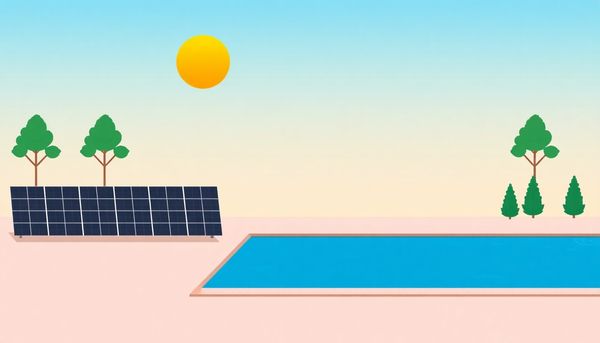
Ever gazed up at the sun and wondered how its boundless energy could lighten your wallet? Harnessing sunlight for savings through solar pool heaters is not just smart—it's transformational. Imagine sitting by your pool, basking in warm water heated by nothing but the sun, knowing you're pocketing savings with every sunbeam that touches your skin.
Solar pool heaters efficiently channel the sun’s energy into keeping your pool warm, and they do so without the ongoing cost of traditional gas or electric systems. While your initial investment might seem steep, with costs usually ranging from $3,000 to $4,000, these systems can last for up to two decades. This longevity means that over time, the reduction in your energy bills could lead to significant net savings.
For those living in sun-drenched locales, the benefits are immediate. Yet, even in chillier regions, solar heaters can extend your swimming season, turning what used to be a frigid plunge into a comfortable swim. It’s like giving your pool a cozy blanket for those brisk, early autumn days.
To optimize the investment, you must consider your pool’s location and the amount of sunlight it receives. A rooftop collector may be ideal for maximizing exposure, capturing both direct and ambient solar radiation. Planning your setup might feel like piecing together a puzzle, but once it’s complete, you'll be soaking in the sun's warmth—and its cost-cutting benefits.
Choosing the right solar system for your pool is like tailoring a suit—it's all about the perfect fit. While solar pool heaters are democratizing pool warmth, the key lies in selecting a system that aligns with your specific needs and location. Your first task is to assess the solar resource available to your property. Consider how much sun your backyard bathes in throughout the year. In sunny locales, a smaller system might suffice, whereas northern climes might require a more robust setup.
Once you've gauged the sunlight, it's time to size the solar collectors. This process is more art than science, balancing the pool's surface area with local weather patterns. For those blessed with year-round sun, aim for collector coverage equal to your pool's total surface area. If you're in a region with shorter swim seasons, you can scale back to about 75% coverage, ensuring you’re still capturing ample rays.
Location matters, too—not just in real estate, but in solar efficiency. Whether you mount the collectors on your roof or spread them across your yard, ensure they’re oriented towards the sun's path. South-facing panels typically soak up the most sunlight, but there’s flexibility. Just avoid shadows from trees or structures that might hinder performance.
Finally, evaluate the thermal performance ratings of your chosen system. High efficiency isn't just a buzzword—it's your ticket to more heat with less hassle. By paying attention to these details, you'll install a solar system that not only warms your pool but also warms your soul with every swim.
Harnessing the sun's power to warm your pool is not just a luxury—it's an exercise in precision and planning. When aiming to maximize efficiency and savings, the first step is understanding your pool's specific needs against the backdrop of your local climate. In the sunny South, solar collectors can perform miracles, while in more temperate zones, strategic placement and the right angle can make all the difference.
Consider your pool as a living space with its own footprint. The Three Quarters Rule is an effective guideline: aim to cover 75% of your pool's surface area with solar collectors, unless you’re keeping your pool open all year, in which case you're looking at full coverage. This isn't just about solar panels; it's about maximizing the natural energy with minimal fuss. If your pool area resembles a shaded oasis, a more robust system or a supplementary heat source might be necessary to maintain those invitingly warm waters.
Moreover, it’s wise to remember that not all solar collectors are created equal. Higher efficiency models might demand a steeper initial payment, but their ability to generate more heat with fewer panels ends up saving both space and money over time. Weighing the thermal performance rating, typically in BTUs or megajoules, helps in comparing the potential of different systems. Once installed, the reduced operational cost of a solar pool heater ensures that every sunny day is a step closer to recouping your investment, allowing you to enjoy your pool without worrying about the energy bill.
Harnessing the abundant power of the sun for your pool heating needs can be a sustainable and cost-effective choice, but maximizing its potential requires strategic planning. A friend of mine, living in sunny Arizona, once shared how a few adjustments to his solar pool setup turned it from lukewarm to perfect swimming conditions. These tweaks could be the difference between merely using a solar pool heater and truly optimizing it.
First off, consider the placement of your solar collectors. Ideally, they should bask in the sun’s full glory throughout the day. This means positioning them without obstruction from trees or nearby buildings. A southern orientation is generally optimal for maximum exposure, but flexibility up to 45 degrees east or west can still yield satisfactory results. My Arizona pal discovered that relocating his panels by just a few feet significantly increased his system’s efficiency.
Next, the angle of the panels deserves attention. In regions with a defined swimming season, angling the panels 10–15 degrees less than your latitude helps capture sunlight efficiently. For those in it for the long haul, a tilt equal to your latitude works best year-round.
Lastly, keep an eye on the weather patterns in your area. If overcast skies are common, investing in higher-efficiency collectors might be wise to compensate for less direct sunlight. Consulting with a local solar expert can also provide insight tailored to your specific conditions, ensuring that your investment reaches its full potential and keeps your pool comfortably warm.
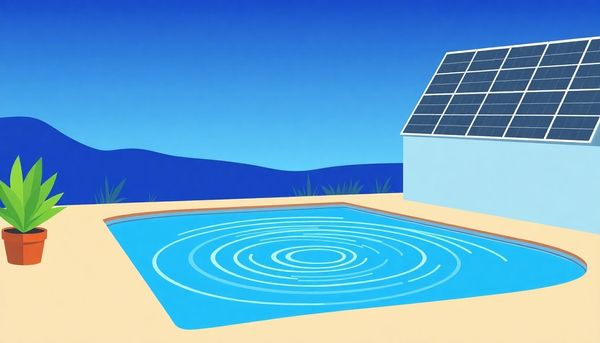
Harnessing solar energy for pool heating requires a strategic approach to collector placement. The key is to maximize exposure to sunlight, which in turn optimizes the efficiency of your system. Start by identifying the sunniest spots around your property. Whether you choose a rooftop or a ground installation, ensure that the collectors face true south, or as close to it as possible, if you're in the Northern Hemisphere. This orientation allows the panels to capture the maximum amount of sunlight throughout the day.
In addition to direction, consider the tilt of the panels. Ideally, the angle should be equal to your geographical latitude. For those using the pool all year, setting the tilt at your latitude works best. For seasonal use, reduce the angle by 10 to 15 degrees to catch more summer rays. Remember, the more sunlight your panels can absorb, the faster your pool heats up, and the greater your energy savings.
Beyond the basics of direction and tilt, watch out for any obstructions. Trees, buildings, and even seasonal changes like leaf growth can shade your panels and reduce their efficiency. If a shadow threatens your solar setup, a little trim or a strategic panel relocation might be in order.
Lastly, don’t hesitate to consult a solar expert. They can evaluate your specific site conditions and recommend custom solutions to ensure you get the most out of your investment. With thoughtful placement, your solar pool heater will work at peak performance, turning those sunlit days into endless hours of swimming bliss.
Harnessing the sun’s energy for your pool isn't just about slapping some panels on the roof and calling it a day. It’s a bit like gardening: you need the right spot, the right angle, and a good understanding of your environment to truly maximize benefits. If you’re serious about tapping into solar power to warm up your swimming pool, understanding how to maximize sun exposure is key.
To start, placement is crucial. Ideally, solar collectors should be positioned on a south-facing area to catch the most rays. If this isn’t possible, panels can still perform efficiently if they’re oriented up to 45 degrees east or west of true south. Think of it as giving your pool its own beach chair, dedicated to soaking up every sunbeam it can get.
Once you’ve found the best site, consider the tilt of your solar collectors. For those who want to enjoy their pool year-round, match the panel’s tilt to your latitude. However, if your swimming season is shorter, adjust the angle slightly lower to capture the optimal summer sun. Don’t forget to account for seasonal changes; shadows from trees or buildings that shift throughout the year can sneaky reduce efficiency.
When my neighbor installed their solar heater, they had to navigate around a couple of imposing oak trees. By consulting with a solar expert, they managed to adjust the panel placement just right, optimizing their sun exposure without turning the yard into a deforested zone. This strategic thinking paid off, ensuring they got the most heat with minimal fuss.
Finally, remember that a bit of preventative maintenance goes a long way. Keep your panels clean and clear of debris to maintain maximum sunlight absorption. With a little planning and care, your pool can stay warm and inviting, allowing you to enjoy it longer each season without skyrocketing energy bills.
Harnessing the sun's energy to transform your pool into a warm haven involves more than just placing solar collectors in your yard. It's all about perfecting their orientation and tilt, ensuring you capture every possible ray. Think of it like aiming a satellite dish for the clearest signal; precision is key. The orientation of your solar collectors, ideally facing true south in the northern hemisphere, determines how well they soak up sunlight throughout the day. You have some flexibility here—up to 45° east or west of true south—without sacrificing too much efficiency.
Tilt is another crucial factor. It’s not just about angling the collectors to look more aerodynamic on your roof. The angle should be adjusted according to your location’s latitude. For summer-only heating, tilt them at an angle equal to your latitude minus 10° to 15°. If you’re using the pool all year round, match the tilt to your latitude. These adjustments allow the collectors to absorb maximum sunlight, even when the sun is playing coy in the sky.
I once visited a friend who had set up their solar pool heater without considering these factors, and their pool was lukewarm at best. After a few tweaks to the orientation and tilt, their pool became an inviting, warm retreat. So, with the right setup, you can enjoy your pool season after season, basking in the sun's generous warmth and your wise investment's rewards.
When contemplating a solar pool heater, assessing system efficiency and costs is paramount. Imagine your pool as a sunlit oasis, where the sun itself keeps the water invitingly warm. To achieve this, a judicious evaluation of both efficiency and cost is necessary. Solar pool heaters are often lauded for their eco-friendliness and long-term savings. However, the upfront costs can be steep, ranging from $3,000 to $4,000, which may cause some initial hesitation.
Efficiency plays a crucial role in determining the real value of your investment. One method to gauge this is by examining the thermal performance rating. This rating, expressed in British thermal units (BTUs) or megajoules (MJ), indicates the amount of energy a collector can convert from sunlight into usable heat. A higher rating generally translates into a more efficient system, potentially reducing the number of panels required and, thus, the overall cost. For instance, if you aim for 21,000 BTU/day, knowing the efficiency per dollar spent helps in selecting the most cost-effective panels.
Don't forget the space your system will occupy. Solar collectors need substantial room, typically around 75% to 100% of the pool's surface area, depending on usage. Strategically placing these collectors to maximize sun exposure is vital for both efficiency and cost-effectiveness. Cutting corners with cheaper, less efficient panels could necessitate larger installations, ultimately driving up costs in terms of space and additional equipment.
In balancing costs and efficiency, you’ll find the sweet spot where financial investment aligns with sustainable warmth, turning your pool into a solar-powered paradise.
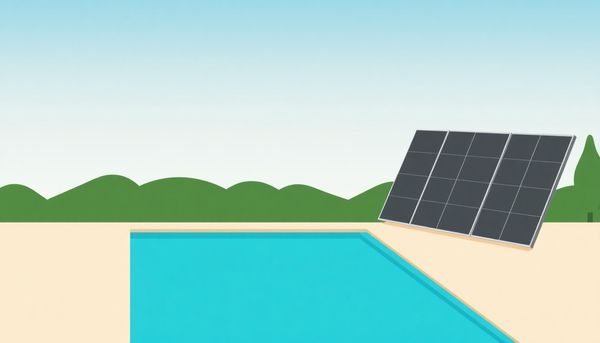
In the quest for the perfect pool temperature, balancing cost and performance becomes an art form. You might find yourself gazing at your backyard, a little unsure, debating whether to go all-in on a fancy solar pool heater or take a more modest route. It’s tempting to save a few bucks upfront, but think of it as a long-term relationship; the right choice now is likely to pay dividends down the road.
A close friend once faced this dilemma. She opted for a mid-range solar pool heater, thinking the savings would outweigh the potential drawbacks. However, she soon found herself tangled in repair costs and a less-than-ideal swimming season. It was then she realized that spending a little extra initially could have saved her both time and money in the long run. Investing more in a high-efficiency system not only ensures better performance but also reduces the number of panels needed, freeing up space for that garden you've always wanted.
Remember, the type of panels you choose—glazed or unglazed—affects both performance and longevity. While unglazed panels might seem a bargain, their efficiency dips in cooler weather, and they often necessitate a backup system. Glazed panels, though pricier, offer superior durability and can handle a broader range of climates, meaning fewer headaches and more pool parties. In the end, striking a balance between upfront costs and long-term savings is key, ensuring you make the most of both your wallet and sunny days by the pool.
Harnessing the sun’s power for your pool doesn't just happen by installing any solar heater; it requires a thoughtful approach to truly maximize efficiency. Think of it like crafting a perfect recipe – a little bit of the right ingredients goes a long way. The first step is to evaluate the space you have available, whether it's your roof or yard, ensuring it receives ample sunlight. A south-facing direction is ideal, but slight deviations can still yield good results if you keep the panels tilted correctly based on your geographical latitude.
Consider the size of your pool as a guiding principle. The "Three Quarters Rule" suggests your solar collector's surface area should be about 75% of your pool's surface area for seasonal use, or 100% for year-round operation. For instance, a northern pool used half the year at 16x32 feet would require roughly 384 square feet of solar panels. This ensures that your pool water heats efficiently without unnecessary energy loss.
Partnering your solar heaters with a high-efficiency pool pump can drastically cut energy costs. Look for systems that boast a thermal performance rating that meets your needs without breaking the bank. Engaging a local expert to perform a solar resource analysis can provide clarity on your site’s potential, guiding you to the best setup for your location. By planning carefully and ensuring each decision fits your specific circumstances, you turn the sun’s rays into a reliable, cost-effective warmth for your pool.
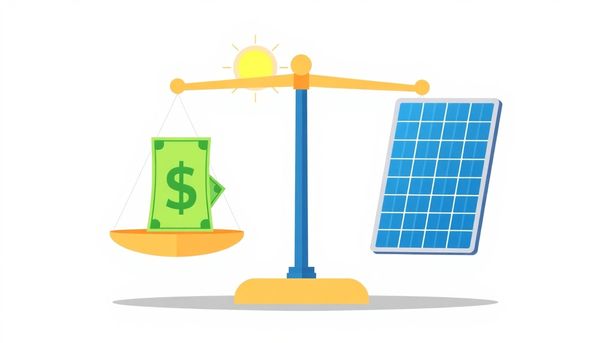
This article provided insights into maintaining your pool. Start your pool care journey today!
Want to become a pool maintenance expert? Our free Pool School course covers everything you need to know about pool care. From basic maintenance to advanced troubleshooting, you'll learn how to:
Join over 10,000 pool owners who have already transformed their pool care routine. Get started with our free Pool School course today!